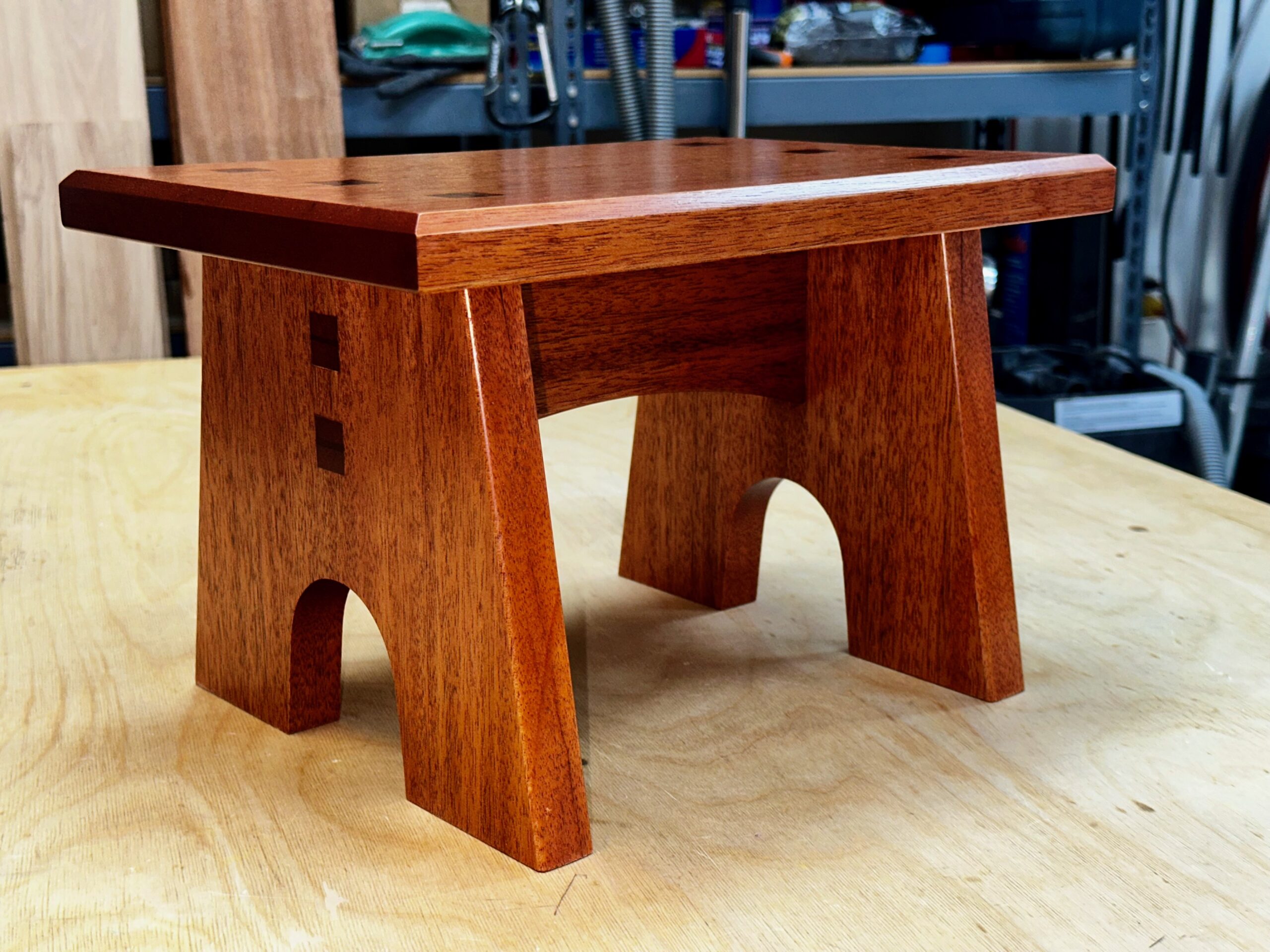I don’t write about everything I make—honestly, I’m not sure how I decide what ends up on the website. But recently, I built a simple step stool using hand-cut mortise and tenon joinery with wedged tenons, and it felt like a good one to document.
Eventually, I want to build a version of this stool with angled sides, which will require angled mortise and tenon joints—something completely new to me. But first, I decided to stick with a straightforward build using traditional joinery and 90-degree angles.

Mortise and tenon joints are nothing new for me; I’ve made plenty of them before. But this time, I relied more on hand tools than machines, which made the process slower but more satisfying. The new skill for me was cutting and fitting wedged tenons.
I did some research ahead of time to avoid common mistakes—particularly around how the wedge interacts with the mortised piece. One key detail: the direction the wedge is driven matters a lot. If you insert the wedge in the same direction as the grain of the mortised board (parallel), you’re much more likely to split the wood. To avoid that, the wedge should be inserted perpendicular to the grain direction, so the spreading force goes across the wood fibers rather than with them. That little orientation detail is critical. Got it—check. Easy enough.

Another consideration: when you saw a kerf in the tenon to receive the wedge, should you drill a small “relief” hole at the bottom of the kerf to prevent the tenon from splitting when the wedge is driven in? The answer seems to depend on how close the tenon is to the edge of the board. If it’s too close, the wood is more likely to split under pressure. I chose not to drill the relief holes on this build, thinking the tenons were far enough from the edge to be safe. That was my learning on this project—and if you look at the photos, you’ll see that all of the wedged tenons close to the edge of the board ended up splitting. Oops. I guess they weren’t far enough in from the edge. On the bright side, all of the wedged tenons located more toward the center of the boards held up perfectly.

So: lesson learned. A good reminder that spacing and grain orientation both matter, even with joints I thought I knew well. I won’t make that mistake again!

